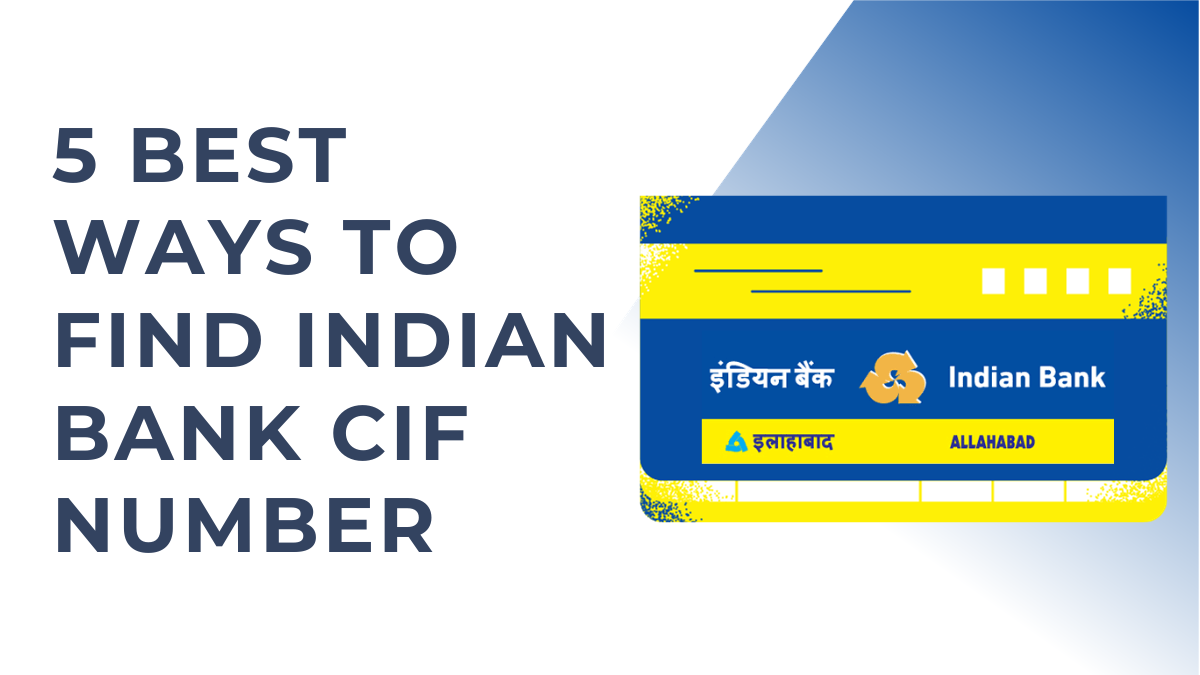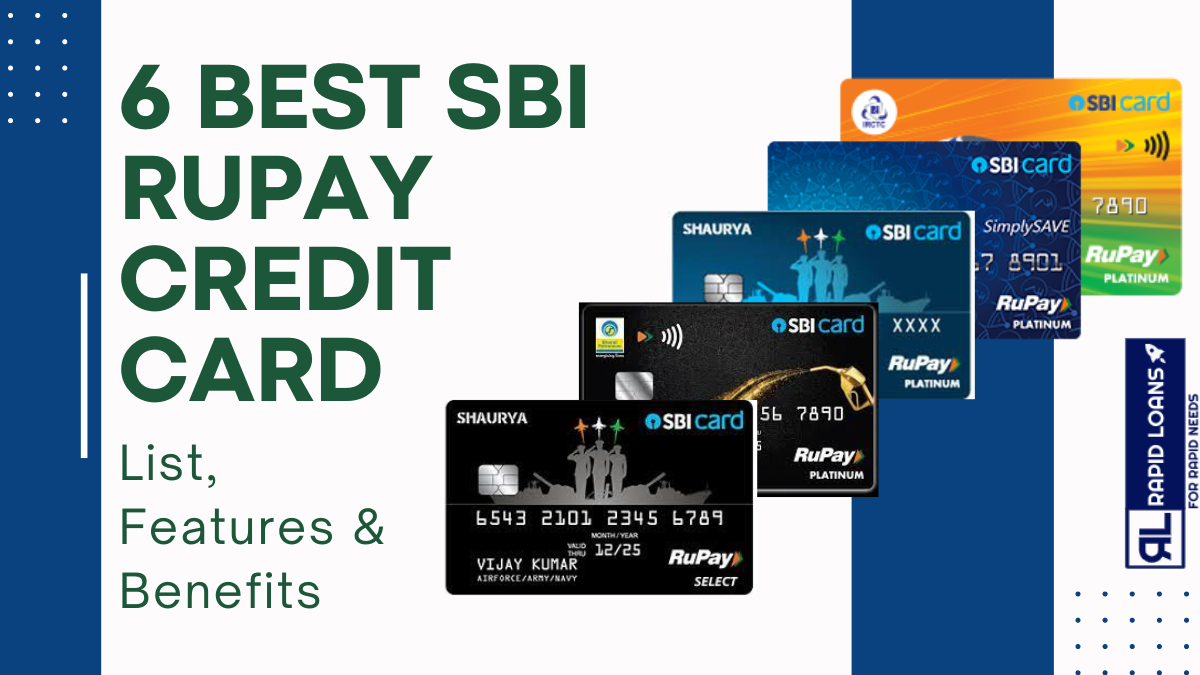Do you know what is your Indian Bank CIF number? If not, then you are missing out on a lot of benefits and convenience that this number can offer you.
In this article, I will tell you everything you need to know about Indian Bank CIF number, why you need it, and how to find it using different methods.
What is Indian Bank CIF Number?
CIF stands for Customer Information File. It is a 11-digit number that the bank assigns to each customer when they open an account with them. It is a unique number that identifies each customer of the bank.
Indian Bank CIF number is printed on the first page of your passbook, along with your name, account number, and branch code.
You can also find it on your cheque book and account statement. You can also find it online or offline using various methods that I will explain later in this article.
Indian Bank CIF number is very important for various banking services, such as transferring your account from one branch to another, applying for a loan, getting a new cheque book, etc. It is also essential for online banking, mobile banking, and other digital services offered by the bank.
Why Do You Need Indian Bank CIF Number?
You may be wondering why you need Indian Bank CIF number. What is the use of it? Well, there are many reasons why you need Indian Bank CIF Number. Here are some of them:
- To link your Aadhaar card with your bank account: The government of India has made it mandatory for all bank account holders to link their Aadhaar card with their bank account. This is to prevent frauds and money laundering activities. To link your Aadhaar card with your Indian Bank account, you need your Indian Bank CIF number.
- To update your KYC (Know Your Customer) details: To update your KYC details with Indian Bank, you need your Indian Bank CIF number.
- To register for net banking and mobile banking: Net banking and mobile banking are convenient ways to access your bank account anytime and anywhere. You can check your balance, transfer funds, pay bills, recharge your mobile, book tickets, etc. using these services. To register for net banking and mobile banking with Indian Bank, you need your Indian Bank CIF number.
- To transfer your account from one branch to another: If you want to change your branch or relocate to another city or state, you can transfer your account from one branch to another without closing it. This will save you time and hassle of opening a new account. To transfer your account from one branch to another with Indian Bank, you need your Indian Bank CIF number.
- To apply for a loan, credit card, or other products: If you want to avail any loan or credit card or any other product offered by Indian Bank, you need to fill an application form and submit some documents. One of the documents that you need to submit is your passbook or cheque book that has your Indian Bank CIF number printed on it.
- To avail customer care and grievance redressal services: If you have any query, complaint, or feedback regarding any service or product of Indian Bank, you can contact their customer care and grievance redressal department. You can call their toll-free number, email them, chat with them, or visit their branch. You need your Indian Bank CIF number to avail their customer care and grievance redressal services.
As you can see, Indian Bank CIF number is very useful and necessary for various purposes. It is like a key that unlocks many benefits and convenience for you. Therefore, you should know your Indian Bank CIF number and keep it safe and confidential.
How to Find Indian Bank CIF Number Online?
One of the easiest ways to find your Indian Bank CIF number is to use the online banking facility provided by the bank. Here are the steps to find your Indian Bank CIF number online:
- Visit the official website of Indian Bank Know your CIF Page – https://apps.indianbank.in/emailstatement/ToFetchCIFNo.aspx
- Enter your Account Number, Registered Mobile Number and verify the captcha.
- Now click on “Send OTP” button.
- Enter the OTP your just recieved on your registered mobile number and click on “Verify OTP”
- You will see your Indian Bank CIF number displayed on the screen along with other details
How to Find Indian Bank CIF Number Without Passbook?
If you do not have your passbook with you or have lost it, you can still find your Indian Bank CIF number using other methods. One of them is to use your cheque book. Here are the steps to find your Indian Bank CIF number without passbook:
- Take out any cheque leaf from your cheque book
- Look at the bottom left corner of the cheque leaf
- You will see a series of numbers separated by slashes (/)
- The first 10-digit number is your Indian Bank account number
- The second 10-digit number is your Indian Bank CIF number
How to Find CIF Number in Indian Bank Mobile App?
Another convenient way to find your Indian Bank CIF number is to use the mobile app of the bank.
You can download IndOASIS Indian Bank MobileApp from Google Play Store or Apple App Store and register using your debit card or internet banking credentials.
Here are the steps to find your CIF number in Indian Bank mobile app:
- Open the Indian Bank mobile app on your smartphone
- Login with your user ID and MPIN or biometric authentication
- Tap on the “Accounts” option in the middle of the screen
- Choose the account number for which you want to find CIF Number.
- You will see your Indian Bank CIF number displayed on the screen along with other details such as Account Number, IFSC etc.
How to Know Your CIF Number in Indian Bank by SMS?
If you do not have access to internet or mobile app, you can still know your Indian Bank CIF number by sending an SMS from your registered mobile number. Here are the steps to know your CIF number in Indian Bank by SMS:
- Type “CIF” and send it to 94443-94443
- You will receive an SMS from the bank with your Indian Bank CIF number and other details
How to Get CIF Number of Indian Bank by Calling Customer Care?
The last method to get your Indian Bank CIF number is to call the customer care helpline of the bank.
You can dial the toll-free number 1800 4250 0000 or 1800 425 4422 from any landline or mobile phone.
Here are the steps to get your CIF number of Indian Bank by calling customer care:
- Call the customer care number and select your preferred language
- Choose the option for account related queries
- Enter your 16-digit debit card number and PIN
- Choose the option for CIF number enquiry
- The customer care executive will verify your identity and provide you with your Indian Bank CIF number
How to Link Your Indian Bank CIF Number with Aadhaar Card?
As per the government of India’s directive, it is mandatory for all bank account holders to link their Aadhaar card with their bank account.
Aadhaar card is a 12-digit unique identification number issued by the Unique Identification Authority of India (UIDAI) to every resident of India.
It contains the biometric and demographic details of the individual, such as name, date of birth, gender, address, photograph, fingerprint, and iris scan.
Linking your Aadhaar card with your bank account will help you to avail various benefits and subsidies from the government, such as LPG subsidy, pension, scholarship, etc.
It will also help you to prevent frauds and money laundering activities, as Aadhaar card is a proof of identity and address.
To link your Aadhaar card with your Indian Bank account, you need your Indian Bank CIF number. You can link your Aadhaar card with your Indian Bank account using any of these methods:
- Online method: You can link your Aadhaar card with your Indian Bank account online by using the net banking or mobile banking portal. Here are the steps to link your Aadhaar card with your Indian Bank account online:
- Visit the official website of Indian Bank at [www.indianbank.net.in]
- Click on the “Login” button on the top right corner of the homepage
- Enter your user ID and password and click on “Submit”
- On the dashboard, click on “Aadhaar Seeding” under the “Services” section
- Enter your 12-digit Aadhaar number and click on “Submit”
- You will receive an OTP (One Time Password) on your registered mobile number
- Enter the OTP and click on “Confirm”
- You will see a confirmation message on the screen that your Aadhaar card has been linked with your Indian Bank account
- Offline method: You can link your Aadhaar card with your Indian Bank account offline by visiting your nearest Indian Bank branch. Here are the steps to link your Aadhaar card with your Indian Bank account offline:
- Visit your nearest Indian Bank branch and meet the branch manager
- Fill up a form for linking your Aadhaar card with your Indian Bank account and submit it to the branch manager
- Attach a self-attested copy of your Aadhaar card and passbook or cheque book that has your Indian Bank CIF number printed on it
- The branch manager will verify your details and process your request
- You will receive a confirmation SMS or email from the bank that your Aadhaar card has been linked with your Indian Bank account
- SMS method: You can link your Aadhaar card with your Indian Bank account by sending an SMS from your registered mobile number. Here are the steps to link your Aadhaar card with your Indian Bank account by SMS:
- Type “AADHAAR <space> <10-digit CIF number> <space> <12-digit Aadhaar number>” and send it to 94443-94443
- You will receive an SMS from the bank that your request has been received and is under process
- You will receive another SMS from the bank that your Aadhaar card has been linked with your Indian Bank account
- IVR method: You can link your Aadhaar card with your Indian Bank account by calling the Interactive Voice Response (IVR) system of the bank. Here are the steps to link your Aadhaar card with your Indian Bank account by IVR:
- Call the toll-free number 1800 4250 0000 or 1800 425 4422 from any landline or mobile phone
- Select your preferred language
- Choose the option for Aadhaar seeding
- Enter your 10-digit CIF number and 12-digit Aadhaar number
- You will receive an OTP on your registered mobile number
- Enter the OTP and confirm
- You will hear a confirmation message that your Aadhaar card has been linked with your Indian Bank account
Conclusion
We hope this article has helped you to find your Indian Bank CIF number using different methods. You can use any of these methods as per your convenience and availability of resources.
Remember to keep your Indian Bank CIF number safe and confidential, as it is linked to your personal and financial information. Do not share it with anyone or disclose it on any unauthorised website or app.
If you have any queries or feedback regarding your Indian Bank CIF number or any other service or product of the bank, you can contact their customer care.
FAQs
What is the full form of CIF number?
CIF number stands for Customer Information File number. It is a unique number that the bank assigns to each customer to store their personal and account details in a digital file.
How many digits are there in Indian Bank CIF number?
Indian Bank CIF number is a 11-digit number that identifies each customer of the bank.
How can I get my Indian Bank CIF number online?
You can get your Indian Bank CIF number online by logging into your net banking account. On the dashboard, click on “View Profile” under the “Personal Details” section. You will see your Indian Bank CIF number displayed on the screen.
How can I get my Indian Bank CIF number without passbook or cheque book?
If you do not have your passbook or cheque book with you, you can still get your Indian Bank CIF number by using your mobile app, SMS, or customer care. You can find the detailed steps for each method in this article.
Is Indian Bank CIF number same as customer ID?
Yes, Indian Bank CIF number is the same as customer ID. You can use either of these terms interchangeably to refer to your unique identification number with the bank.
No, it is not safe to share your Indian Bank CIF number with others. Your Indian Bank CIF number is linked to your personal and financial information, and sharing it with others may expose you to frauds and scams. You should only share your Indian Bank CIF number with authorized personnel of the bank or when required by law.












